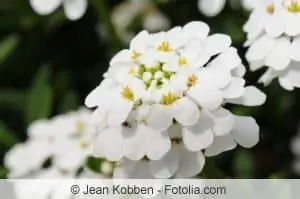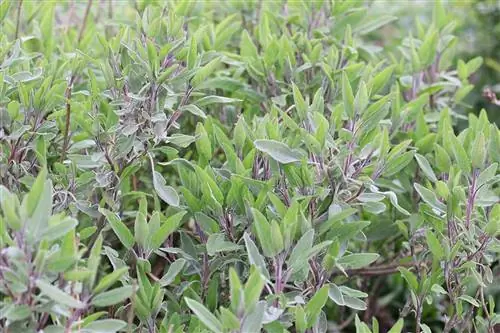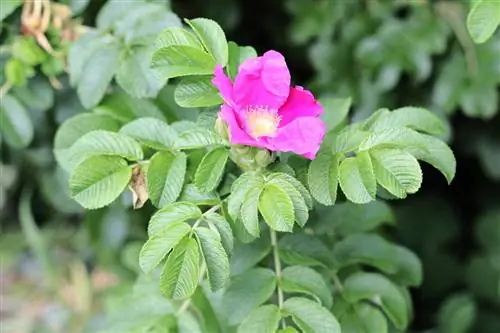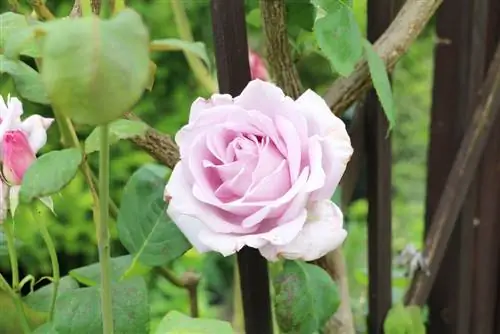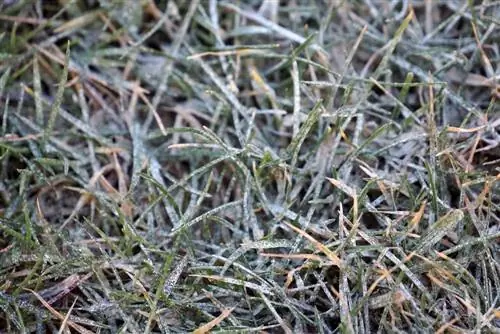- Author admin [email protected].
- Public 2023-12-17 03:39.
- Last modified 2025-01-24 12:45.
The delicate rock alyssum has the botanical name Aurinia Saxatilis and belongs to the cruciferous family. It is particularly popular because of its undemanding nature and the intense yellow flowers; the flowering period extends throughout spring until the beginning of summer. If you prune at the right time, you can even encourage it to bloom again in late summer. The sun-drenched rock alyssum is particularly suitable for the alpine rock garden and can also be used for planting walls and stone cracks.
Location & plant substrate
The Aurinia saxatilis comes from the mountainous regions of Asia Minor, southern and central Europe and can also be found wild as a neophyte in some regions of Germany. The plant requires a predominantly sunny location and dry to fresh soil, partial shade and deep shade are not tolerated at all. The following criteria are crucial for the location and the plant substrate:
- Prefers sunny to full sun location
- Places with at least 4-6 hours of sunshine daily are ideal
- Moderately moist to dry soil is ideal
- Especially suitable for slightly sandy dry beds, bed borders and rock gardens
- Feels very comfortable in stone structures, cracks in walls, rock steps and stone joints
- Also suitable as a ground cover for poor soils
- Needs permeable and loamy-humus soil, with as little nitrogen as possible
- Drain the substrate well before planting
- Tolerates both neutral, alkaline and slightly acidic pH values
- Can cope with most normal garden soils
Tip:
The rock alyssum can be planted excellently as a bee pasture if the gardener is also a beekeeper and there are beehives in the garden. Due to its early flowering, it is an important source of food for the busy insects in early spring.
Sowing, Planting & Propagating

The rock alyssum is available as a pre-grown plant from specialist retailers, but you can also grow it yourself by sowing. Propagation is easy to do with cuttings and usually leads to good results. The following aspects must be taken into account when sowing, planting and propagating:
- Maintain a distance of at least 40 cm from other plants
- Can be planted at any time as long as the ground is not frozen
- Sowing seeds in autumn or spring
- Let head cuttings root at the beginning of summer
Tip:
It takes about 6 months for the Aurinia saxatilis to grow well. During this time the plant is relatively sensitive and needs special care, especially regular watering.
Watering & Fertilizing
With rock alyssum, neither the water nor the nutrient requirements are particularly high; the frugal plant usually copes well with the available rain volume and the nutrients in the soil:
- Rainfall is usually sufficient, no further watering is necessary
- Only water additionally if it is dry for a long time
- Stale rainwater is ideal
- Tolerates short dry periods, but does not tolerate permanently dry soils
- Prefers nutrient-poor soils
- Do not fertilize additionally, flowering will be weaker if too many nutrients are added
- In extremely nutrient-poor soils, occasionally use pond water as fertilizer
- Work some compost into the bed in autumn
- Can tolerate some drought, but absolutely no waterlogging
Flowers, leaves & growth
Aurinia saxatilis delights the gardener's eye with its long-lasting blooms; the best conditions for exceptionally strong growth are dry and well-drained soil and a very sunny location. The rock alyssum forms deep taproots and is therefore not particularly easy to transplant to another location. The following criteria play an important role in the flowers, leaves and growth:
-

Stoneweed Yellow flowering plant with overhanging growth
- Cushion-like and clumpy growth habit, broadly branched
- Subshrub-like growth, slightly woody at the beginning
- Growth height between 10-25 cm, in exceptions it grows up to 40 cm high
- Growth width approx. 10-30 cm
- Grows quickly and vigorously, quickly forms dense cushions
- Small flower umbels with a deep yellow color and extreme luminosity
- Golden yellow, wheel-shaped and four-petaled flowers with hermaphrodite characteristics
- Wintergreen foliage with finely hairy and tongue-shaped stems
- Grey-green leaves, simple and alternate, approx. 7-10 cm long
- Flowering period from April to June, with mild winters from March
- Produces panicled grapes, also called pod fruits, from April to May
Cutting
The rock alyssum must be pruned periodically, otherwise it tends to overgrow and become woody. In addition, the plant can be stimulated to bloom again with a cleverly timed pruning:
- Prune after flowering
- Cut the plant down to about half to a third
- First cut off the flower stalks down to the foliage, then reduce the entire plant
- Always leave at least 10 cm leftover stock
- Make the cut less deeply if the plant is very woody
- Extremely slow-flowering specimens should be cut back heavily in autumn
Wintering
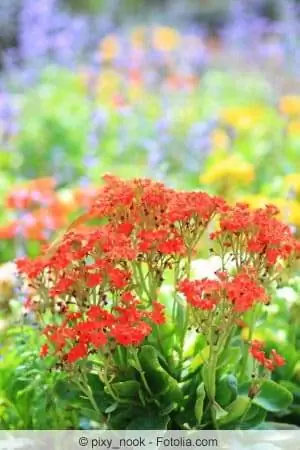
Aurinia saxatilis has hardy properties due to its origins in mountainous regions and is therefore ideal for the often harsh winters of local latitudes:
- Frost-hardy plant with wintergreen leaves
- Can withstand temperatures down to -23° C
- Protect from too much moisture during extremely wet and cold rainy phases, drain the soil well
Diseases & Pests
Incorrect care and unsuitable location conditions can quickly lead to an outbreak of diseases and pest infestation. The following aspects must be taken into account:
- Susceptible to honeydew
- Curled leaves and galls indicate aphid infestation
- Wash the leaves with soapy water
- Use biological pest control, e.g. parasitic wasps and predatory mosquitoes
- Use insecticides only in extreme emergencies
Conclusion
The rock alyssum is a frugal plant that does not require much care. As a rule, it gets by with the available rain and the nutrients in the soil and can be left to its own devices. During the flowering period, the cushion-like sub-shrubs shine with a golden yellow shine and beautify any garden area. Since the flowering starts quite early and can be extended by pruning at the right time, gardeners can enjoy this plant for a very long time. Care is only required when pruning so that the Aurinia saxatilis does not become lazy, become too woody or even start to grow wild in the garden. It is important to prevent waterlogging, which can be avoided by installing drainage before planting. Although the flowering plant does not require daily care, it should still be checked regularly for diseases and pests. These problems quickly creep in with improper care and incorrect location conditions.

